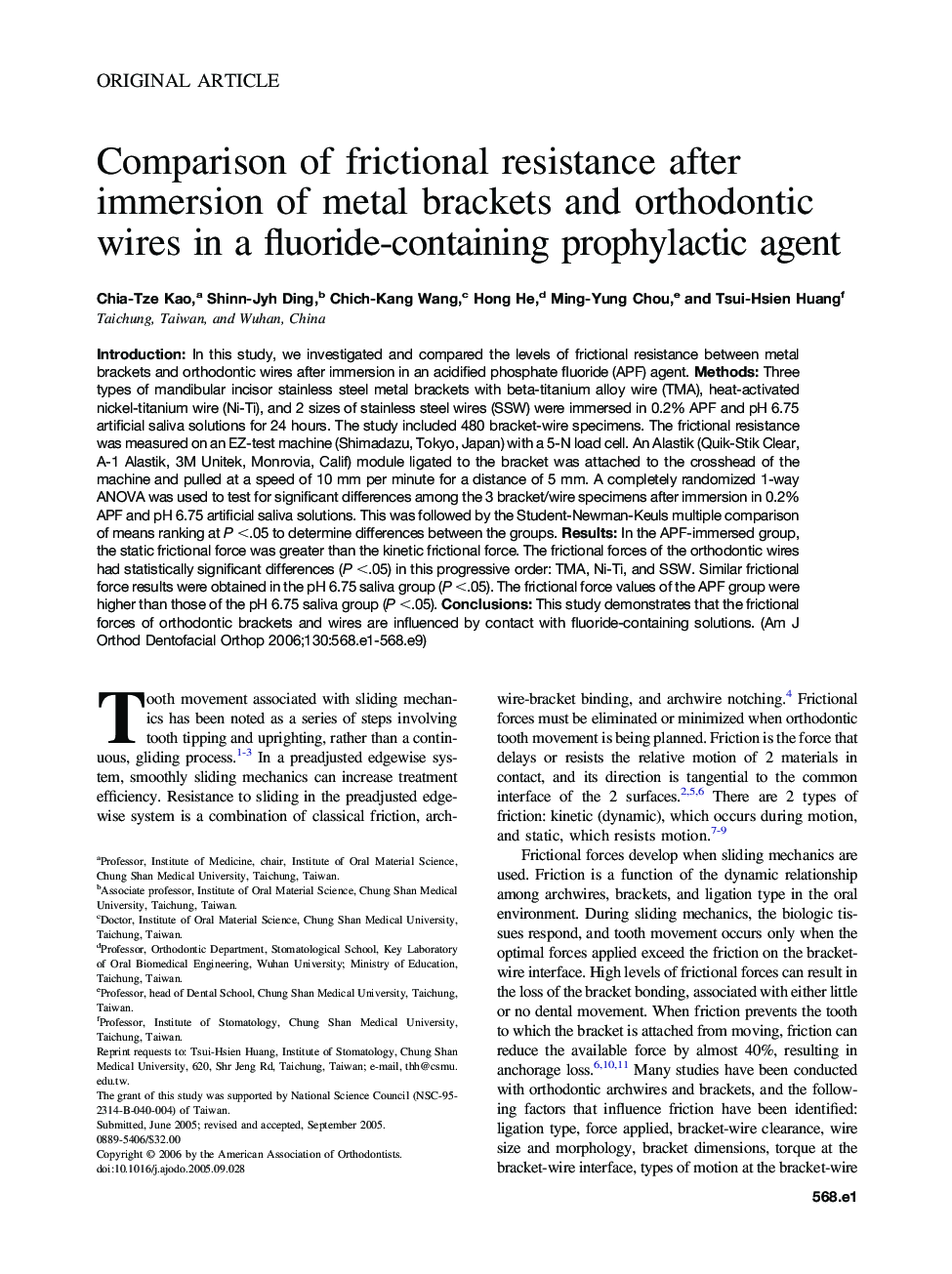| Article ID | Journal | Published Year | Pages | File Type |
|---|---|---|---|---|
| 3119875 | American Journal of Orthodontics and Dentofacial Orthopedics | 2006 | 9 Pages |
Abstract
Introduction: In this study, we investigated and compared the levels of frictional resistance between metal brackets and orthodontic wires after immersion in an acidified phosphate fluoride (APF) agent. Methods: Three types of mandibular incisor stainless steel metal brackets with beta-titanium alloy wire (TMA), heat-activated nickel-titanium wire (Ni-Ti), and 2 sizes of stainless steel wires (SSW) were immersed in 0.2% APF and pH 6.75 artificial saliva solutions for 24 hours. The study included 480 bracket-wire specimens. The frictional resistance was measured on an EZ-test machine (Shimadazu, Tokyo, Japan) with a 5-N load cell. An Alastik (Quik-Stik Clear, A-1 Alastik, 3M Unitek, Monrovia, Calif) module ligated to the bracket was attached to the crosshead of the machine and pulled at a speed of 10 mm per minute for a distance of 5 mm. A completely randomized 1-way ANOVA was used to test for significant differences among the 3 bracket/wire specimens after immersion in 0.2% APF and pH 6.75 artificial saliva solutions. This was followed by the Student-Newman-Keuls multiple comparison of means ranking at P <.05 to determine differences between the groups. Results: In the APF-immersed group, the static frictional force was greater than the kinetic frictional force. The frictional forces of the orthodontic wires had statistically significant differences (P <.05) in this progressive order: TMA, Ni-Ti, and SSW. Similar frictional force results were obtained in the pH 6.75 saliva group (P <.05). The frictional force values of the APF group were higher than those of the pH 6.75 saliva group (P <.05). Conclusions: This study demonstrates that the frictional forces of orthodontic brackets and wires are influenced by contact with fluoride-containing solutions.
Related Topics
Health Sciences
Medicine and Dentistry
Dentistry, Oral Surgery and Medicine
Authors
Chia-Tze Kao, Shinn-Jyh Ding, Chich-Kang Wang, Hong He, Ming-Yung Chou, Tsui-Hsien Huang,
